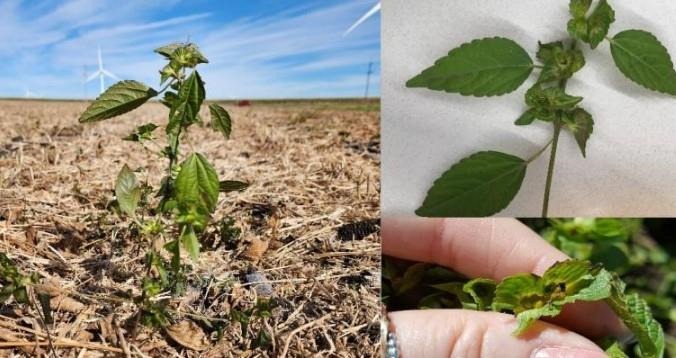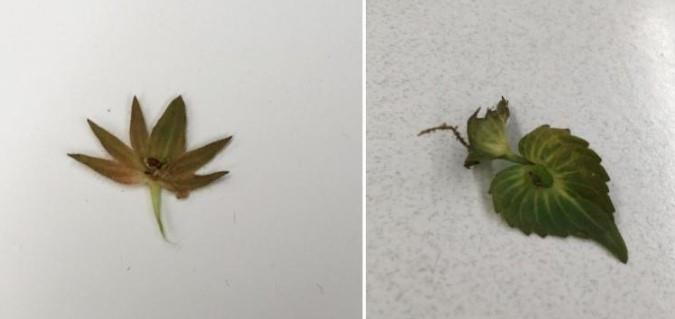By Meaghan Anderson
While Iowa weed communities change constantly, it is rare that a species new to the region is discovered. Asian copperleaf (Acalypha australis) was first discovered in Iowa in 2016 in a corn field near Cedar Falls. Prior to this discovery, the only documented infestation in North America was within New York City. The plant was recently found in a soybean field in Grundy County, nearly 30 miles from the original infestation (Figure 1). In both fields, several dense patches of the weed were present throughout the field, indicating the weed was in the field for several years before being identified.

Figure 1. A farmer in Grundy County noted a dense population of Asian copperleaf at soybean harvest.
The plant is native to China, Australia, Japan and other countries in the region. It is unknown how the plant was introduced to Iowa, but it is likely the two reported infestations are related. The plant is a threat to row crops in its native range. Two sources note this species has populations resistant to HG 9 (glyphosate) and HG 14 (PPO inhibiting) herbicides in its native range. A USDA Risk Analysis completed in 2012 stated that the species did not show ‘any strong invasive or weediness characters’, but because of a high level of uncertainty the plant was classified as “High Risk” in 57% of the simulations.
Identification
Asian copperleaf is in the spurge family but lacks milky sap common in many spurges. It is an erect plant that can reach heights of 2-3 ft., but most plants found in Iowa were less than 18” in height. Leaves are 2-3” long, lanceolate with serrated (finely toothed) edges. The distinguishing characteristic of Asian copperleaf are the bracts located beneath the flowers. The bracts are circular to heart-shaped with a dentate margin (Figure 2). Virginia copperleaf and three-seeded mercury, two other Acalypha species present in Iowa with a similar growth habit, have deeply-lobed bracts (Figure 3). It is unlikely that anyone could confidently differentiate between these species prior to flowering. Asian copperleaf seems to emerge late in the season and remains under the crop canopy throughout the growing season.

Figure 2. Asian copperleaf has circular to heart-shaped bracts beneath flowers.

Figure 3. Deeply-lobed bract like that from Virginia copperleaf and three-seeded mercury (left) compared to a heart-shaped bract from Asian copperleaf (right).
Requested action. The Iowa Department of Agriculture and Land Stewardship and Iowa State University are interested in determining how widespread the weed is across the state. By determining how much area is infested with this weed, we can better estimate the risk it poses to Iowa crop production. Asian copperleaf was detected in both fields during crop harvest. Thus, we are requesting that farmers and others in the agricultural industry keep an eye for this plant as fields are harvested. If you detect the plant, please contact the Iowa Department of Agriculture and Land Stewardship at 515-725-1470.
Source : iastate.edu